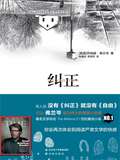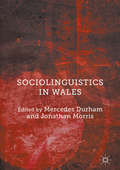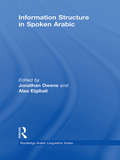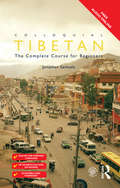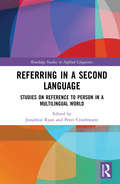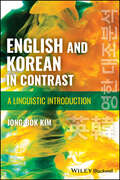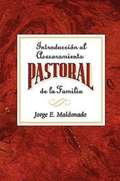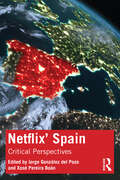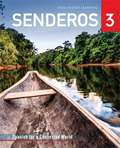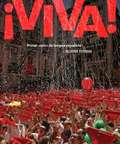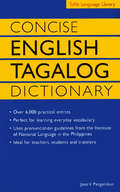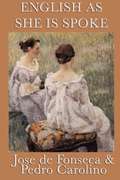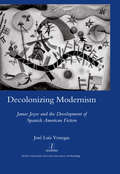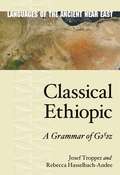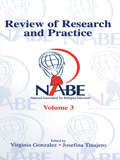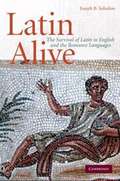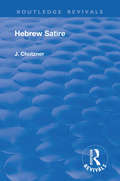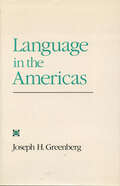- Table View
- List View
The Corrections (Mandarin Edition)
by Jonathan FranzenAfter almost fifty years as a wife and mother, Enid Lambert is ready to have some fun. Unfortunately, her husband is losing his sanity to Parkinson's disease, and their children have long since flown the family nest to the catastrophes of their own lives. Desperate for some pleasure to look forward to, Enid has set her heart on an elusive goal: bringing her family together for one last Christmas at home 伊妮德·兰伯特 当了五十年的妻子和母亲之后 准备让自己享受一下快乐 不幸的是 她的丈夫 艾尔弗雷德罹患帕金森症 逐渐精神失常 他们的孩子也早已飞出了家庭的小巢 奔向各自生活的悲剧 大儿子加里 银行的投资经理,居家男人 正努力说服自己和家人他没有临床抑郁症----尽管各方面证据相反 二儿子奇普 因性丑闻失去了高校的稳定工作 处于半失业状态 指望着靠手头的剧本赚钱 三女儿丹妮丝年轻美貌 逃离了惨淡的婚姻 成了纽约高级餐厅的主厨 却与一位已婚男性有染----至少她母亲如此怀疑 尽管情势看起来无比绝望 伊妮德却意志坚定 她要纠正一切的错误 享受全家人的最后一次圣诞欢聚
Froggy Juega Al Fútbol
by Jonathan LondonEl Froggy está listo para el juego de fútbol grande--su equipo está jugando contra los Feroces para la copa de la ciudad. Todo lo que Froggy tiene que hacer es recordar no utilizar sus manos. Pero Froggy está ocupado en hacer volteretas y escoger margaritas. Ideal para los jugadores de fútbol.
Sociolinguistics in Wales
by Jonathan Morris Mercedes DurhamThis volume showcases recent sociolinguistic research about Wales and offers contributions from scholars working on Welsh, English and other languages spoken in the country. The chapters present a range of frameworks and methodologies used in sociolinguistics and apply them to the Welsh linguistic context. This context is very distinctive compared to the rest of the UK and represents a prime ground to observe different aspects of the interplay between language and society. The structure of the volume reflects the linguistic diversity of the country and is divided into three sections. The first section examines recent research on Welsh, the second section focuses on English, and the third section deals with research on Welsh and English together, as well as research on other languages spoken in Wales. The book will be useful to those wanting to discover more about language and society in Wales, as well as to those already working in the field as it offers new perspectives and insights.
Information Structure in Spoken Arabic (Routledge Arabic Linguistics Series)
by Jonathan OwensThis book explores speakers’ intentions, and the structural and pragmatic resources they employ, in spoken Arabic – which is different in many essential respects from literary Arabic. Based on new empirical findings from across the Arabic world this book elucidates the many ways in which context and the goals and intentions of the speaker inform and constrain linguistic structure in spoken Arabic. This is the first book to provide an in-depth analysis of information structure in spoken Arabic, which is based on language as it is actually used, not on normatively-given grammar. Written by leading experts in Arabic linguistics, the studies evaluate the ways in which relevant parts of a message in spoken Arabic are encoded, highlighted or obscured. It covers a broad range of issues from across the Arabic-speaking world, including the discourse-sensitive properties of word order variation, the use of intonation for information focussing, the differential role of native Arabic and second languages to encode information in a codeswitching context, and the need for cultural contextualization to understand the role of "disinformation" structure. The studies combine a strong empirical basis with methodological and theoretical issues drawn from a number of different perspectives including pragmatic theory, language contact, instrumental prosodic analysis and (de-)grammaticalization theory. The introductory chapter embeds the project within the deeper Arabic grammatical tradition, as elaborated by the eleventh century grammarian Abdul Qahir al-Jurjani. This book provides an invaluable comprehensive introduction to an important, yet understudied, component of spoken Arabic.
Colloquial Tibetan: The Complete Course for Beginners (Colloquial Ser.)
by Jonathan SamuelsColloquial Tibetan provides a step-by-step course in Central Tibetan as it is spoken by native speakers. Combining a thorough treatment of the language as it is used in everyday situations with an accurate written representation of this spoken form, it equips learners with the essential skills needed to communicate confidently and effectively in Tibetan in a broad range of situations. No prior knowledge of the language is required. Key features include: progressive coverage of speaking, listening, reading and writing skills phonetic transliteration of the Tibetan script throughout the course to aid pronunciation and understanding of the writing system structured, jargon-free explanations of grammar an extensive range of focused and stimulating exercises realistic and entertaining dialogues covering a broad variety of scenarios useful vocabulary lists throughout the text additional resources available at the back of the book, including a full answer key, a grammar section, bilingual glossaries and English translations of dialogues. Balanced, comprehensive and rewarding, Colloquial Tibetan will be an indispensable resource both for independent learners and for students taking courses in Tibetan. Audio material to accompany the course is available to download free in MP3 format from www.routledge.com/cw/colloquials. Recorded by native speakers, the audio material features the dialogues and texts from the book and will help develop your listening and pronunciation skills. By the end of this course, you will be at Level B2 of the Common European Framework for Languages and at the Intermediate-High on the ACTFL proficiency scales.
Referring in a Second Language: Studies on Reference to Person in a Multilingual World (Routledge Studies in Applied Linguistics)
by Jonathon Ryan Peter CrosthwaiteThe introduction and tracking of reference to people or individuals, known as referential movement, is a central feature of coherence, and accounts for “about every third word of discourse”. Located at the intersection of pragmatics and grammar, reference is now proving a rich and enduring source of insight into second language development. The challenge for second language (L2) learners involves navigating the selection and positioning of reference in the target language, continually shifting and balancing the referential means used to maintain coherence, while remaining acutely sensitive to the discourse and social context. The present volume focuses on how L2 learners meet that challenge, bringing together both eminent and up-and-coming researchers in the field of L2 acquisition. The chapters address a range of problems in second language acquisition (SLA) (e.g., form-function mapping, first language [L1] influence, developmental trajectories), and do so in relation to various theoretical approaches to reference (e.g., Accessibility Theory, Givenness Hierarchy). The global outlook of these studies relates to the L2 acquisition of English, French, Japanese, Korean, and Spanish and covers a diverse range of situational contexts including heritage language learning, English as a medium of instruction, and the development of sociolinguistic competence.
English and Korean in Contrast: A Linguistic Introduction
by Jong-Bok KimENGLISH AND KOREAN IN CONTRAST English and Korean in Contrast: A Linguistic Introduction is the first book of its kind to present a comprehensive yet student-friendly comparative review of the grammars of English and Korean. Author Jong-Bok Kim, an internationally-recognized expert, offers rigorous contrastive analyses of all major aspects of English and Korean while addressing common usage errors made by learners of each language. Designed for both English- and Korean-language classrooms, this unique textbook describes and contrasts the two languages at every level from sound, word, and grammar to figurative language and metaphors. Throughout the text, the author uses an accessible, descriptive-based approach that covers both core and peripheral phenomena of English and Korean. Offering invaluable insights into the major sources of difficulty or ease in learning the two languages, English and Korean in Contrast: A Linguistic Introduction is the perfect undergraduate resource not only for English-speaking students studying Korean language and linguistics, but also for Korean-speaking students studying English language and linguistics.
The Syntactic Structures of Korean
by Jong-Bok KimCovering both core and peripheral phenomena, The Syntactic Structures of Korean is a concrete and precise grammar of the language. Based on the framework of Sign-based Construction Grammar, it provides a grammar of Korean which is computationally implementable and cognitively viable. Remarkably broad, yet in-depth, it is an outstanding analysis of Korean syntax and semantics which will be welcomed by those working in linguistics and the Korean language.
Ombres en el temps
by Jordi Sierra i FabraLèpica història duna familia que va emigrar a Barcelona a buscant un somni. Carmen i els seus fills arriben a la Barcelona de 1949 per reunir-se amb Antonio, el pare de la família, que els espera després dhaver estat treballant a la ciutat durant uns anys. Animats per la promesa duna vida millor lluny de les penúries del camp de Murcia, la seva terra natal, topen amb la duresa dun món desconegut per ells on les ferides entre vencedors i vençuts encara són massa obertes. El desig dÚrsula per triomfar als escenaris com a cantant, les dificultats de Funsanta per incorporar-se al món laboral, els enrenous amorosos de Ginés, la lluita de Salvador contra la intolerància i lescletxa que comença a obrir-se entre Carmen i Antonio pels secrets en el seu matrimoni, marcaran els seus destins en un país que camina amb esforç buscant un futur. Amb les cartilles de racionament, la repressió ideològica, lamenaça de les presons franquistes o la tenaç revel·lia dels maquis com a teló de fons, Ombres en el temps és una història ambientada minuciosament que atraparà al lector pels seus personatges emotivament dibuixats, les trames apassionants i la sensacional recreació dels anys més emblemàtics i turbulents de la postguerra, un temps on la subsistència del dia a dia era lúnic recurs en front de ladversitat. Una desgarradora novel·la plena damor, coratge i esperança
Introducción al asesoramiento pastoral de la familia AETH: Introduction to Pastoral Family Counseling Spanish
by Jorge E. MaldonadoLa pérdida de valores morales que llevan a considerar todo desde una perspectiva groseramente relativista; la situación social y económica tan crítica que lleva a tratar de protegernos de cualquier manera posible; el materialismo contemporáneo que nos hace creer que teniendo más cosas seremos más felices; y otros muchos aspectos similares, han provocado una crisis que se refleja y tiene sus efectos en la pareja y familia contemporánea. La sociedad ha contagiado su enfermedad a la familia. Así pues, esta unidad básica sufre los devastadores efectos del tiempo y sociedad en que nos ha tocado vivir. ¿Hay algo que se pueda hacer? ¿Hay remedio que alivie esa enfermedad? El Dr. Maldonado nos muestra que para que la familia pueda procesar cualquier situación crítica que estén viviendo y salir avante por el camino de la recuperación y el crecimiento, la mayor parte del tiempo requiere de orientación, consejo, o asesoría. Así pues, y desde la perspectiva cristiana, en este libro el Dr. Maldonado presenta los elementos básicos de la asesoría, los criterios que servirán para identificar a una familia sana e ir hacia ella, y las metas que se deben perseguir al asesorar y que servirán al asesor o consejero para promover el sano crecimiento tanto de la pareja como de la familia. Porque, a final de cuentas, la familia no es solamente el lugar donde encontramos refugio y alimento. La familia, por sobre todo, es el lugar donde nos formamos como y donde somos verdaderamente humanos y cristianos.
AP® Spanish: Language and Culture Exam Preparation
by Jorge Frisancho María T. Redmon Marta Lucía Restrepo BravoNIMAC-sourced textbook
Netflix' Spain: Critical Perspectives
by Xosé Pereira Boán Jorge González del PozoThis edited collection analyzes the tensions, contradictions, contributions, and new horizons generated and/or imposed by Netflix within Spain’s audiovisual culture. This book provides invaluable insight into how Netflix—first in its role as distributor and then as content creator—has changed the audiovisual landscape in Spain. It discusses how Netflix challenges the traditional method of categorizing film and television output by nationality while also examining how Spain is presented to other countries through the Netflix catalog and questioning what its chosen output—light comedies, mystery/thrillers, narco-fiction, and crime—means for Spain’s national brand. With chapters addressing themes such as reproducibility, pan-Europeanism after Brexit, gender representation, identity, and globalization, this book explores how—under the influence of Netflix—Spain is transitioning from an importer of audiovisual content to a center of export. This book will appeal to students and scholars of Film and Media Studies, Hispanic and Iberian Studies, and Spanish with a specific interest in Spanish film, television, media, and culture, as well as global media industries.
¡VIVA! (Second Edition)
by Philip Redwine Donley Jose A. BlancoWelcome to ¡VIVA!, Second Edition! This highly successful introductory Spanish program is designed to provide you with an active and rewarding learning experience. You are about to embark on an exciting adventure as you learn Spanish and explore the diverse cultures of the Spanish-speaking world.New to the Second Edition * Culture! An enhanced Exploración section presents compelling cultural information on the products, practices, and perspectives of the Spanish-speaking world * Readings! Two new readings--a literary piece and a comic--in the Lectura section help you develop your reading skills with authentic material * Technology! A comprehensive upgrade to the ¡VIVA! Supersite (viva.vhlcentral.com); see p. xxx for a complete description * Support! Ancillaries like the Flash cultura video program and MAESTRO® Language Learning System all closely integrated with your student text
Concise English Tagalog Dictionary
by Jose Villa PanganibanThis is a convenient and travel-sized English to Tagalog DictionaryOver ten million Filipinos speak Tagalog, the official language of the Philippines. This dictionary addresses the growing need for a concise, reliable, and inexpensive English-Tagalog dictionary. It is ideal for teachers, students, businesspeople, travelers, and others who are interested in studying Tagalog. The key to understanding Tagalog is a thorough familiarity with the stresses, glottal vowels, and basic vocabulary of the language, all of which are treated in this book. Pronunciation guidelines were determined by the Institute of National Language, which based its preference on standard Manila dialect. Used in conjunction with Tagalog for Beginners or Elementary Tagalog, also published by Tuttle Publishing, this dictionary is an indispensable tool to those learning Tagalog or traveling to the Philippines.Over 6,000 practical entriesPerfect for learning everyday vocabularyUses pronunciation guidelines from the Institute of National Language in the PhilippinesIdeal for teachers, students and travelers
Concise English Tagalog Dictionary
by Jose Villa PanganibanThis is a convenient and travel-sized English to Tagalog DictionaryOver ten million Filipinos speak Tagalog, the official language of the Philippines. This dictionary addresses the growing need for a concise, reliable, and inexpensive English-Tagalog dictionary. It is ideal for teachers, students, businesspeople, travelers, and others who are interested in studying Tagalog. The key to understanding Tagalog is a thorough familiarity with the stresses, glottal vowels, and basic vocabulary of the language, all of which are treated in this book. Pronunciation guidelines were determined by the Institute of National Language, which based its preference on standard Manila dialect. Used in conjunction with Tagalog for Beginners or Elementary Tagalog, also published by Tuttle Publishing, this dictionary is an indispensable tool to those learning Tagalog or traveling to the Philippines.Over 6,000 practical entriesPerfect for learning everyday vocabularyUses pronunciation guidelines from the Institute of National Language in the PhilippinesIdeal for teachers, students and travelers
English As She Is Spoke
by Jose de Fonseca & CarolinoIn 1855, when Jose da Fonseca and Pedro Carolino wrote an English phrasebook for Portuguese students, they faced just one problem: they didn't know any English. Even worse, they didn't own an English-to-Portuguese dictionary. What they did have, though, was a Portuguese-to-French dictionary, and a French-to-English dictionary. The linguistic train wreck that ensued is a classic of unintentional humor, now revived in the first newly selected edition in a century. Armed with Fonseca and Carolino's guide, a Portuguese traveler can insult a barber ("What news tell me? All hairs dresser are newsmonger"), complain about the orchestra ("It is a noise which to cleve the head"), go hunting ("let aim it! let make fire him"), and consult a handy selection of truly mystifying "Idiotisms and Proverbs."
Decolonizing Modernism: James Joyce and the Development of Spanish American Fiction
by JoseLuis VenegasJames Joyce's Ulysses (1922) has been recognized as a central model for the Spanish American 'New Narrative'. Joyce's linguistic and technical influence became the unequivocal sign that literature in Spanish America had definitively abandoned narrow regionalist concerns and entered a global literary canon. In this bold and wide-ranging study, Jose Luis Venegas rethinks this evolutionary conception of literary history by focusing on the connection between cultural specificity and literary innovation. He argues that the intertextual dialogue between James Joyce and prominent authors such as Argentines Jorge Luis Borges and Julio Cortazar, Cuban Guillermo Cabrera Infante, and Mexican Fernando del Paso, reveals the anti-colonial value of modernist form. Venegas explores the historical similarities between Joyce's Ireland during the 1920s and Spanish America between the 1940s and 70s to challenge depoliticized interpretations of modernist aesthetics and propose unsuspected connections between formal experimentation and the cultural transformations demanded by decolonizing societies. Jose Luis Venegas is Visiting Assistant Professor of Spanish at the University of North Carolina at Greensboro.
Classical Ethiopic: A Grammar of Gəˁəz (Languages of the Ancient Near East #10)
by Rebecca Hasselbach-Andee Josef TropperUpon its publication in 2002, Josef Tropper’s Altäthiopisch: Grammatik des Gəˁəz mit Übungstexten und Glossar was quickly recognized as the best modern grammar of Classical Ethiopic in any language. Now Eisenbrauns makes Tropper’s grammar available for the first time in English, in this revised and expanded edition by Josef Tropper and Rebecca Hasselbach-Andee.Gəˁəz literature is diverse and of major importance for the study of early Christianity, Judaism, and the history of eastern Africa. The language of this rich literature, however, has been difficult to access until now. Designed to help language learners acquire competency with the script from the start, Classical Ethiopic provides a comprehensive treatment of Gəˁəz grammar, with detailed chapters on the language’s writing system, phonology, morphology, morphosyntax, and syntax. Numerous example sentences illustrate the grammatical concepts discussed, and each example is presented in Ethiopic script, transliteration, and English translation. The grammar concludes with an appendix presenting sample texts to be used as exercises, an English-Gəˁəz glossary, and an updated bibliography that takes into account the developments that have occurred in the study of Gəˁəz in the nearly two decades since Tropper’s original publication.Appropriate for the classroom and for independent study, Classical Ethiopic is sure to become the standard reference in English for the study of the language.
Classical Ethiopic: A Grammar of Gəˁəz (Languages of the Ancient Near East)
by Rebecca Hasselbach-Andee Josef TropperUpon its publication in 2002, Josef Tropper’s Altäthiopisch: Grammatik des Gəˁəz mit Übungstexten und Glossar was quickly recognized as the best modern grammar of Classical Ethiopic in any language. Now Eisenbrauns makes Tropper’s grammar available for the first time in English, in this revised and expanded edition by Josef Tropper and Rebecca Hasselbach-Andee.Gəˁəz literature is diverse and of major importance for the study of early Christianity, Judaism, and the history of eastern Africa. The language of this rich literature, however, has been difficult to access until now. Designed to help language learners acquire competency with the script from the start, Classical Ethiopic provides a comprehensive treatment of Gəˁəz grammar, with detailed chapters on the language’s writing system, phonology, morphology, morphosyntax, and syntax. Numerous example sentences illustrate the grammatical concepts discussed, and each example is presented in Ethiopic script, transliteration, and English translation. The grammar concludes with an appendix presenting sample texts to be used as exercises, an English-Gəˁəz glossary, and an updated bibliography that takes into account the developments that have occurred in the study of Gəˁəz in the nearly two decades since Tropper’s original publication.Appropriate for the classroom and for independent study, Classical Ethiopic is sure to become the standard reference in English for the study of the language.
NABE Review of Research and Practice: Volume 3
by Josefina Tinajero Virgina GonzalezThe National Association of Bilingual Education (NABE) published electronic issues of Volumes 1 and 2 of the NABE Journal of Research and Practice to offer archival records of 2002 and 2003 NABE conferences presentations. Beginning with Volume 3, the title of the publication is changed to NABE Review of Research and Practice and is published by Lawrence Erlbaum Associates, Inc. for NABE. NABE Review of Research and Practice, Volume 3 fulfills the following goals: *to establish an annual archival record of cutting-edge NABE conference presentations that generate new knowledge and advance the field of bilingual education research; *to mentor junior scholars within the academic setting by providing an outlet for developing a publication record with the assistance of established scholars, and by publishing guidelines for developing high-quality dissertation research proposals and completed studies, and for university-based efforts to mentor doctoral students in bilingual education;*to offer, in the Research section, an outlet for theoretical and applied research studies that represent innovative conceptual and philosophical perspectives, and that also implement innovative methodologies for solving theoretical and applied problems in bilingual education;*to provide, in the Applied Education/Action Research section, an outlet for case studies, position papers, and action research that comes from practitioners in the field of bilingual education who are implementing research methodologies in their own classrooms or school districts (e.g., teacher-based research, evaluation studies conducted in the implementation of bilingual education federal and state grants); and*to present, in the Position Papers and Reflections section, reflections of experiences of bilingual researchers, practitioners, and public school and higher education students that give insightful self-accounts of the experiences of ethnic minority students, scholars, and educators that allow readers to learn from them as role models and advocates. For further information on NABE conferences and publications visit the NABE Web page at www.nabe.org.
Latin Alive: The Survival of Latin in English and the Romance Languages
by Joseph B. SolodowIn Latin Alive, Joseph Solodow tells the story of how Latin developed into modern French, Spanish, and Italian, and deeply affected English as well. Offering a gripping narrative of language change, Solodow charts Latin's course from classical times to the modern era, with focus on the first millennium of the Common Era. Though the Romance languages evolved directly from Latin, Solodow shows how every important feature of Latin's evolution is also reflected in English. His story includes scores of intriguing etymologies, along with many concrete examples of texts, studies, scholars, anecdotes, and historical events; observations on language; and more. Written with crystalline clarity, this is the first book to tell the story of the Romance languages for the general reader and to illustrate so amply Latin's many-sided survival in English as well.
The Upanishads Volume 2
by Joseph Campbell Swami NikhilanandaSwami Nikhilananda's English translation of three of the major Upanishads - Svetasvatara, Prasna, and Mandukya - offers a scholarly, yet readable version of the sacred texts of ancient India. The Upanishads form the foundation of the Hindu religion and describe the ultimate objective of life - the liberation of the soul from the bondage of the phenomenal world. Swami Nikhilananda's clear and insightful writing combined with notes and explanation based on the commentary of Sankaracharya, the great eighth-century philosopher and mystic of India, will help the spiritual seeker delve into the meaning of these spiritual treasures. This second of four volumes also contains an introduction with a general outline of Hindu ethics.
Revival: Hebrew Satire (1911) (Routledge Revivals)
by Joseph ChotznerVery little attention has hitherto been paid by authors generally to those works forming part of Hebrew literature, in which much of delightful satire is predominant. The object of this volume, therefore, is to make the reader familiar with the contents of several of these writings which may prove interesting to him.
Language in the Americas
by Joseph GreenbergThis book is concerned primarily with the evidence for the validity of a genetic unit, Amerind, embracing the vast majority of New World languages. The only languages excluded are those belonging to the Na-Dene and Eskimo- Aleut families. It examines the now widely held view that Haida, the most distant language genetically, is not to be included in Na-Dene. It confined itself to Sapir's data, although the evidence could have been buttressed considerably by the use of more recent materials. What survives is a body of evidence superior to that which could be adduced under similar restrictions for the affinity of Albanian, Celtic, and Armenian, all three universally recognized as valid members of the Indo-European family of languages. A considerable number of historical hypotheses emerge from the present and the forthcoming volumes. Of these, the most fundamental bears on the question of the peopling of the Americas. If the results presented in this volume and in the companion volume on Eurasiatic are valid, the classification of the world's languages based on genetic criteria undergoes considerable simplification.
